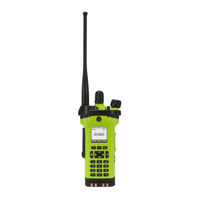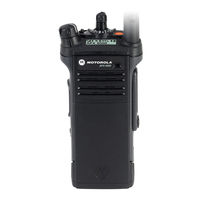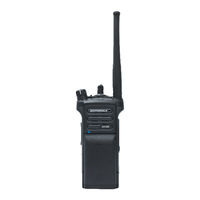Motorola APX 6000 Manuals
Manuals and User Guides for Motorola APX 6000. We have 13 Motorola APX 6000 manuals available for free PDF download: Service Manual, User Manual, Manual
Motorola APX 6000 Service Manual (438 pages)
Brand: Motorola
|
Category: Two-Way Radio
|
Size: 29 MB
Table of Contents
Advertisement
Motorola APX 6000 Service Manual (318 pages)
Brand: Motorola
|
Category: Two-Way Radio
|
Size: 19 MB
Table of Contents
Motorola APX 6000 User Manual (174 pages)
Model 3
Brand: Motorola
|
Category: Two-Way Radio
|
Size: 1 MB
Table of Contents
Advertisement
Motorola APX 6000 User Manual (200 pages)
Brand: Motorola
|
Category: Two-Way Radio
|
Size: 5 MB
Table of Contents
Motorola APX 6000 User Manual (146 pages)
MODEL 2
Brand: Motorola
|
Category: Two-Way Radio
|
Size: 1 MB
Table of Contents
Motorola APX 6000 User Manual (146 pages)
Brand: Motorola
|
Category: Two-Way Radio
|
Size: 20 MB
Table of Contents
Motorola APX 6000 User Manual (110 pages)
Brand: Motorola
|
Category: 2-way radio
|
Size: 3 MB
Table of Contents
Motorola APX 6000 User Manual (100 pages)
Brand: Motorola
|
Category: Two-Way Radio
|
Size: 4 MB
Table of Contents
Motorola APX 6000 User Manual (96 pages)
Model 1
Brand: Motorola
|
Category: Two-Way Radio
|
Size: 1 MB
Table of Contents
Motorola APX 6000 Manual (105 pages)
Model 3
Brand: Motorola
|
Category: Two-Way Radio
|
Size: 3 MB
Table of Contents
Motorola APX 6000 User Manual (45 pages)
VEHICULAR ADAPTER (VA) System Compatibility Matrix
Brand: Motorola
|
Category: Two-Way Radio
|
Size: 5 MB
Table of Contents
Motorola APX 6000 User Manual (54 pages)
Brand: Motorola
|
Category: Portable Radio
|
Size: 5 MB
Table of Contents
Motorola APX 6000 Manual (25 pages)
Brand: Motorola
|
Category: Portable Radio
|
Size: 2 MB












